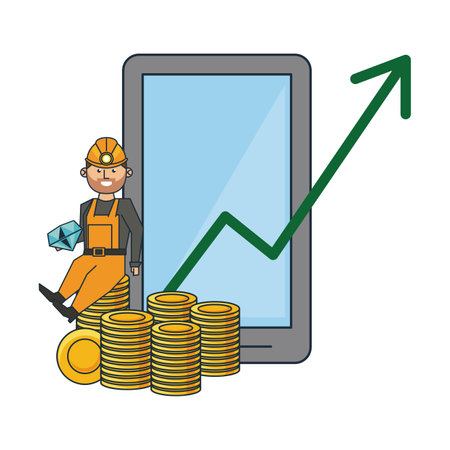Introduction: The Power of Feedback in Career Growth
In today’s fast-paced American workplaces, feedback stands out as a critical driver for professional development and career growth. More than just a performance review tool, feedback acts as a bridge between current skill sets and future ambitions. It empowers employees to identify strengths, recognize areas for improvement, and create actionable plans for upskilling. As organizations increasingly value agility and lifelong learning, the ability to give and receive meaningful feedback has become essential for anyone looking to advance their career. Embracing feedback not only enhances individual performance but also fosters a culture of continuous improvement, innovation, and adaptability—qualities that are highly prized in dynamic U.S. business environments.
Understanding Constructive Feedback
In the journey of linking feedback to professional development and career growth, it’s crucial to first define what effective feedback truly is. Constructive feedback is more than just pointing out what went wrong—it is a specific, actionable, and respectful communication that aims to foster improvement. Unlike criticism, which often focuses on shortcomings without offering solutions, constructive feedback highlights both strengths and areas for growth while providing clear guidance on how to move forward. This approach nurtures a growth mindset by encouraging individuals to view challenges as opportunities to learn and improve, rather than as threats to their competence.
Constructive Feedback vs. Criticism: Key Differences
| Constructive Feedback | Criticism | |
|---|---|---|
| Purpose | Support development and learning | Highlight flaws or mistakes |
| Tone | Respectful, encouraging, solution-oriented | Negative, often discouraging |
| Specificity | Focused on specific behaviors or outcomes | General or personal attacks |
| Outcome | Nurtures motivation and self-improvement | Lowers morale and engagement |
| Actionability | Provides clear steps for improvement | Lacks guidance for next steps |
Cultivating a Growth Mindset in Any Work Environment
Whether you’re working remotely or in-person, constructive feedback is essential in building a culture of continuous learning. In remote settings, timely and thoughtful feedback helps bridge the gap created by physical distance, making team members feel seen and valued. In traditional office environments, face-to-face feedback allows for richer communication cues and immediate dialogue. By consistently providing effective feedback in both contexts, organizations can empower employees to take ownership of their development and adapt proactively to new challenges—key drivers of long-term career growth.

3. Creating a Feedback-Friendly Culture
To truly link feedback to professional development and career growth, American organizations are prioritizing the creation of a feedback-friendly culture. At the heart of this transformation is the belief that continuous feedback should be woven into everyday interactions, not reserved only for annual reviews or formal check-ins. Leading U.S. companies like Google, Microsoft, and Netflix have pioneered best practices that foster clarity, inclusivity, and psychological safety within their teams.
Clarity in Communication
Clarity is key when it comes to feedback. Successful organizations ensure that both managers and employees understand how to give and receive actionable feedback. This often involves training sessions on constructive communication, as well as providing clear guidelines on what effective feedback looks like. By setting expectations around transparency and specificity, employees feel more confident both sharing their perspectives and receiving input from others.
Inclusivity at Every Level
Embedding continuous feedback also means making sure all voices are heard. American organizations are increasingly adopting 360-degree feedback systems that allow employees to receive input from peers, supervisors, and even direct reports. This inclusive approach not only gives a fuller picture of performance but also encourages diverse viewpoints, making everyone feel valued and included in the professional development process.
Psychological Safety as a Foundation
Perhaps most importantly, psychological safety is treated as non-negotiable. Companies invest in building trust so team members can share honest feedback without fear of retaliation or embarrassment. Leaders are trained to respond with empathy and openness, modeling vulnerability themselves. This creates an environment where employees see feedback as a tool for growth—not criticism—and are motivated to use it to drive their own career journeys forward.
Real-World Examples
Many organizations reinforce these cultural values by integrating regular “pulse checks,” open-door policies, and informal coffee chats into their routines. Some even use technology platforms that make it easy to give and receive instant feedback, helping keep the conversation ongoing and relevant. By normalizing frequent, supportive exchanges, American workplaces empower individuals at every stage of their careers to thrive.
4. Turning Feedback Into Actionable Growth
Receiving feedback is just the beginning—what truly matters is how you use it to fuel your professional development and career growth. To make feedback a catalyst for improvement, it’s essential to translate insights into clear, achievable actions. Here are practical strategies that empower employees to bridge the gap between feedback and tangible results, all while fostering self-reflection, accountability, and proactive skill-building.
Step 1: Reflect on Feedback Objectively
Start by taking time to process the feedback without judgment. Ask yourself:
- What patterns or recurring themes emerge?
- How does this align with my own self-assessment?
- What emotions does this feedback trigger, and why?
Self-reflection helps you separate constructive advice from emotional reactions, allowing you to focus on areas with the greatest potential for growth.
Step 2: Set SMART Development Goals
Transform feedback into actionable goals using the SMART framework—Specific, Measurable, Achievable, Relevant, and Time-bound. Here’s how you can do it:
| Feedback Example | SMART Goal |
|---|---|
| “Improve communication in team meetings.” | “Contribute at least one idea in every team meeting over the next two months.” |
| “Strengthen project management skills.” | “Complete an online project management course and apply two new techniques in upcoming projects within three months.” |
| “Enhance customer service responsiveness.” | “Respond to all customer inquiries within 24 hours for the next quarter.” |
Step 3: Build Accountability Structures
Accountability drives follow-through. Share your development goals with a mentor, manager, or trusted colleague who can check in on your progress. Regularly schedule brief reviews—weekly or bi-weekly—to assess what’s working and where adjustments are needed.
Step 4: Take Proactive Skill-Building Actions
Identify resources and opportunities that align with your goals:
- Online Courses: Upskill through platforms like LinkedIn Learning or Coursera.
- Peer Learning: Join cross-functional teams or communities of practice.
- Stretch Assignments: Volunteer for projects outside your comfort zone to gain hands-on experience.
- Workshops & Seminars: Attend industry events to stay updated and network.
Step 5: Celebrate Wins & Iterate
Acknowledge your progress—no matter how small. Celebrating milestones boosts motivation and reinforces positive habits. Use each round of feedback as a launchpad for further development, making growth an ongoing cycle rather than a one-time event.
5. Leveraging Feedback for Career Advancement
In the American workplace, feedback isn’t just a performance review formality—it’s a powerful tool for accelerating your career trajectory. Proactively seeking and acting on feedback can set you apart, helping you climb the ladder faster, unlock new networking channels, and ensure your personal growth is aligned with organizational goals.
Accelerating Promotions Through Feedback
Employees who regularly solicit feedback demonstrate initiative and a commitment to self-improvement—two qualities highly valued by U.S. employers. By acting on constructive criticism and turning it into actionable steps, you consistently show your adaptability and drive, making you a top candidate when promotion opportunities arise. This proactive approach signals to leadership that you’re invested in both your own development and the broader success of the company.
Opening Doors to New Opportunities
Seeking feedback often means engaging with colleagues, mentors, and leaders across departments. These conversations naturally expand your professional network and expose you to new projects or cross-functional teams. As your reputation for being receptive and growth-minded spreads, youll find more doors opening—whether it’s an invitation to join a high-visibility initiative or being considered for stretch assignments that broaden your skill set.
Aligning Personal Growth with Business Objectives
The most impactful feedback is tied directly to business objectives. When you ask targeted questions about how your work contributes to team or company goals, you gain clarity on where to focus your efforts. Acting on this type of feedback ensures your growth is not only personal but also aligned with the organization’s needs—making you an indispensable asset and a natural choice for advancement.
Building a Cycle of Continuous Progress
Ultimately, leveraging feedback creates a virtuous cycle: as you improve and take on greater responsibility, further opportunities present themselves. In today’s fast-paced and dynamic U.S. workplaces, those who continuously learn from feedback are better positioned to achieve their career ambitions while driving business success.
6. Overcoming Challenges in the Feedback Process
While feedback is essential for professional development and career growth, the process isn’t always smooth. Common barriers can make giving and receiving feedback tricky, especially in fast-paced, diverse, or remote work environments. By identifying these obstacles and learning strategies to overcome them, we can keep feedback empowering and effective.
Recognizing Bias in Feedback
Unconscious bias can influence how feedback is given and received, leading to misunderstandings or missed opportunities for growth. It’s important to approach feedback with self-awareness and a commitment to fairness. Encourage open dialogue and seek multiple perspectives to ensure feedback is balanced and focused on actual performance rather than personal traits.
Navigating Discomfort
Many people feel uneasy giving or receiving constructive criticism. This discomfort can be a real barrier to meaningful professional development. To move past it, create a culture of psychological safety where feedback is seen as a tool for growth, not judgment. Practice active listening, ask clarifying questions, and express appreciation for honest input—even when it’s tough to hear.
Overcoming Remote Working Hurdles
Remote work brings unique challenges to the feedback process: fewer face-to-face interactions, potential miscommunication via digital channels, and time zone differences can all get in the way. To counter this, use clear communication tools, schedule regular check-ins, and be intentional about creating space for both formal reviews and informal conversations. Video calls can help bridge the gap by adding nuance that written messages may lack.
Actionable Tips for Navigating Barriers
- Be specific: Focus on clear examples rather than generalities.
- Stay solution-oriented: Frame feedback as an opportunity for development.
- Leverage technology: Use collaboration platforms to document progress and share insights transparently.
- Cultivate empathy: Remember everyone has different backgrounds and communication styles.
The Bottom Line
By acknowledging and addressing these common challenges—bias, discomfort, and remote work hurdles—we make the feedback process more inclusive and impactful. This ensures that feedback remains a vital driver of professional development and career advancement in any work environment.
7. Conclusion: Making Feedback a Catalyst for Lifelong Learning
In the dynamic and ever-changing landscape of American industries, feedback is far more than an annual formality—it’s the lifeblood of continuous growth. By viewing feedback as an ongoing resource rather than a one-time event, professionals can position themselves to adapt, innovate, and thrive in fast-evolving sectors from tech to healthcare to creative fields. Embracing feedback with an open mind transforms it into a powerful catalyst for lifelong learning, empowering individuals to identify blind spots, strengthen their skills, and proactively shape their own career trajectories. As organizations increasingly value adaptability and self-driven development, those who actively seek and apply constructive input will stand out as resilient contributors and future leaders. Ultimately, making feedback part of your professional DNA ensures that you’re not just keeping pace with change—you’re setting the pace and building a sustainable path for career success in the American workplace.

